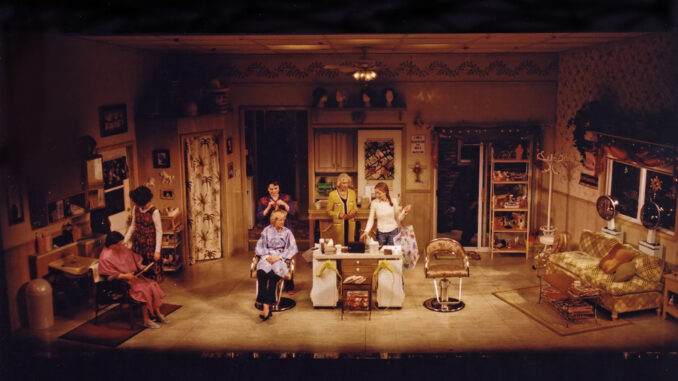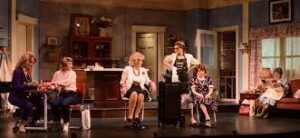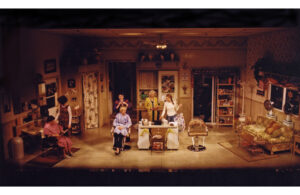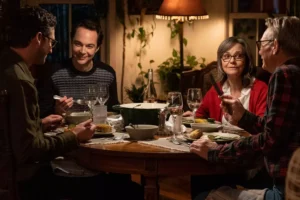
An Inside Look at Steel Magnolias from Robert Harling
The playwright and screenwriter reflects on the Southern film that touched the world
Writer Robert Harling at Oaklawn Plantation, his farm near Natchez, Louisiana.
Editor’s note: The following is an excerpt from the G&G book S Is for Southern: A Guide to the South, from Absinthe to Zydeco. A compendium of Southern life and culture, the book contains nearly five hundred entries spanning every letter of the alphabet.
Before the play or the movie existed, “steel magnolias” was simply a description of Southern women. I’ve heard it all my life. It means something that appears delicate and fragile but wields unexpected strength. When I wrote the play, in 1987, it seemed the fitting title. The story of Steel Magnolias is entirely true, inspired by family tragedy. My sister, Susan, had recently died of complications of diabetes, and I desperately needed to celebrate her, my mother, and the loving community of neighborhood ladies that had supported them through good times and bad.

The sublime Margo Martindale, the actress for whom I wrote the role of Truvy, reminds me that when we were in rehearsal for the play’s New York opening, we all thought I had written a drama. We had no idea there would be “laughter through tears,” or that these characters—wise and witty women in a small-town Southern beauty shop—would capture the imagination of New York theater-goers. The play caught on, and soon Hollywood came a-callin’. Every actress you could think of attended the show. They had to close off the street because of the crowds when Elizabeth Taylor showed up. Cher was there. Lucille Ball. I had tea with Bette Davis! I could write a play about that experience alone. Then the director of the film adaptation, Herbert Ross, assembled the cast of any playwright’s dreams: Sally Field, Shirley MacLaine, Dolly Parton, Olympia Dukakis, Daryl Hannah, and an incandescent newcomer, Julia Roberts, who would play my sister.
When I started work on the screenplay, fashioning the simple, one-set, beauty-parlor play to fit the big screen was a challenge I loved. The audience would now get to see all the events and eccentricities that, in the theater, the clients of Truvy’s Beauty Spot had only discussed. My daddy, whom Tom Skerritt would now play, really did shoot at birds in the trees. My sister’s wedding did indeed have a bleeding armadillo groom’s cake. (Years later, the New York Times credited Steel Magnolias with reviving the popularity of red velvet cake.)

The producer, Ray Stark, decided to film in my hometown of Natchitoches, Louisiana, where the story all took place: instant authenticity. It was surreal to see Dolly, Shirley, Sally, and the rest of the cast in the homes, grocery stores, and churches where their real-life character inspirations led their daily lives. All agreed that the experience enhanced their portrayals. Sam Shepard, who came through town to play Dolly’s husband, pointed out what a singular experience this was; writing a play about one’s family’s experience in one’s hometown, then having a movie made in that very town, with that cast, was a very lucky thing. Shirley MacLaine did not attribute it to luck. She was quite certain it all happened because Susan wanted her story told. Shirley’s always right.
After the film’s release in 1989, life became a whirlwind. Heady stuff. We had a royal premiere in London for Prince Charles and Princess Diana. We opened the Berlin Film Festival when the wall was coming down. After the festival’s opening night, Ray Stark arranged an additional screening in East Berlin. It was the first time a Western film, with paid admission, was shown in East Germany since the wall had gone up, and the line of East Berliners waiting to buy tickets stretched as far as I could see. It was incredibly moving to sit and watch the film with them. It had been dubbed into German, and the audience had no idea who any of the actors were, except Dolly. But they laughed in all the places American audiences had. And they cried. It blew me away. After decades of the Iron Curtain and Communist government, their first glimpse of a Western movie was about life in a Southern town. That was the true heady stuff.

In the wake of the film, awareness of the play hurtled around the world. It’s been translated into umpteen languages. It’s a crazy trip to hear one’s dialogue spoken in Chinese. It’s a thrill to know that my sister’s story moves theatergoers in Croatia, and makes Egyptian audiences laugh. As I write this, a tour of an Indian production is under way in Bombay. The Southern show goes on.
People keep asking, “Why is Steel Magnolias still so popular after thirty years?” I can’t take any real credit. I just wrote down what happened. It’s ultimately my sister’s story, with quintessentially Southern characters
